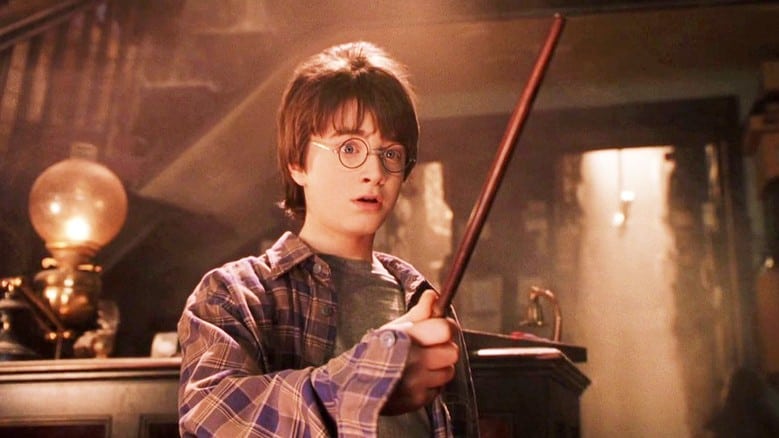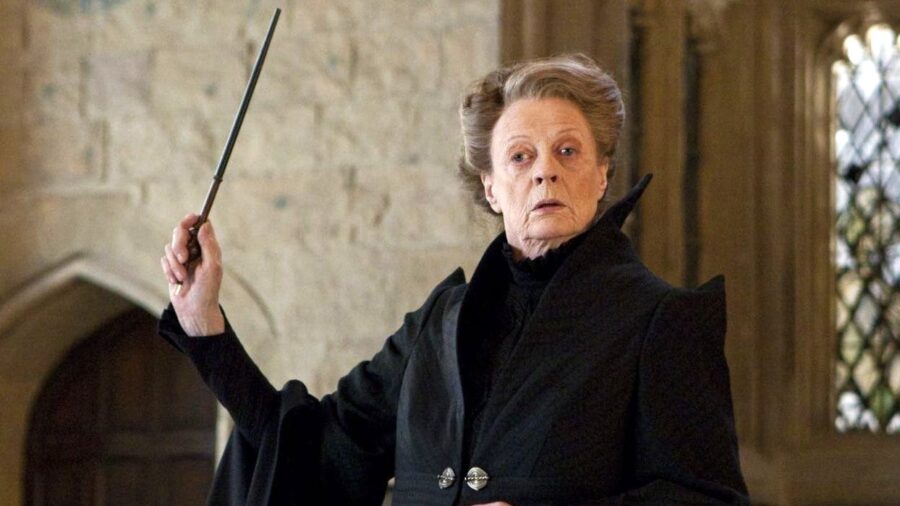How Do Wands Work In Harry Potter?
Discover what wands are made of and how they work in the Harry Potter universe.

In the wizarding world of Harry Potter, nearly every witch and wizard owns and uses a wand to channel their magic. But how do the wands in Harry Potter actually work? According to J.K. Rowling, the exact magical technology behind wand-making is a “jealously guarded secret,” but despite the secrecy, there are hints throughout the books that help us understand exactly how a wand channels magic for its wizarding counterparts.
As we know from reading the Harry Potter books, magical people from all over the world travel to Mr. Ollivander’s shop in London when it is time for them to get their wands. Ollivanders is the best around and has been since his family traveled to England with the Romans in 382 B.C. and set up their shop in Diagon Alley. However, despite being the best wandmaker in the biz, all wands, no matter where they came from have the same foundational qualities.
In the Harry Potter universe, wand magic is the culmination of three parts: the wood, a magical core, and the witch or wizard.
In this world, the magic doesn’t come from the wand, but from within a witch or wizard who possesses magic in their genetics. Wands are simply a conduit for this magic to help bring the energy out of the magical person and manifest it into the physical world in the shape of whatever spell they’re casting.

That’s where the wand cores come in. Like most students at Hogwarts, Harry Potter got his wand from Ollivandar’s, who uses three main core materials for his wands—dragon heartstring, unicorn hair, and phoenix feathers (other wand artisans employ alternative core substances, such as veela hair, basilisk skin, and acromantula web).
It’s the magical core that is the conduit that works as a channel between the witch or wizard’s innate magical powers and the spell they’re casting.
However, the wands in the Harry Potter universe are much more than just a tool for witches and wizards to use. While wandless magic is more common in other parts of the world, in Europe and the United States, the wizarding world has come to rely on their wands to such a degree that the wands have almost become a part of who they are, like a new appendage. In fact, wands are regarded as a quasi-sentient beings.
Discovering the perfect wand for a witch or wizard is often an intricate process of trial and error because it isn’t as simple as going into the wand shop and picking out a nice hawthorn stick from the selection of wands. In fact, as we learned in the first Harry Potter book, the wand chooses the wizard, not the other way around.
It’s never directly been disclosed how the wand is able to choose its human counterpart, but it’s possible that it could have something to do with the Celtic Calendar as Harry Potter, Hermione Granger, Ron Weasley, and Draco Malfoy all had wands that reflect the Celtic tree associated with their birthdays. Additionally, most of the wands reflect the personalities of their owners in some way.

Fleur Delacour, a part-veela, possesses a wand constructed from rosewood and veela hair from her grandmother, forming an embodiment of femininity. Voldemort’s wand combines yew wood, derived from a tree known for its toxic sap and foliage, with a phoenix feather core, signifying the malicious aura surrounding the Dark Lord.
Holly, renowned for retaining its vibrant green leaves throughout the year and bearing crimson berries during winter, symbolizes hope and wards off malevolence—an essence captured within Harry’s wand.
Most witches and wizards use the same wand from the age of 11 to when they die, and they’re often buried with their wands or have them burned after their death. Because, in European culture, the wand is much more than a tool and is a part of who they are, it’s very difficult to do good magic with someone else’s wand—once the wand bonds with someone, it is bonded only to them.
While the secrets of how Ollivander and other wand makers create their wands will likely die with the art of wand-making, we can decipher the foundational aspects of wand lore from hints that are given in the Harry Potter books.












